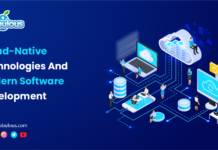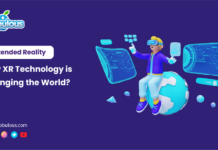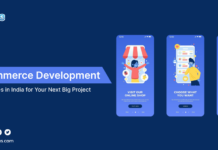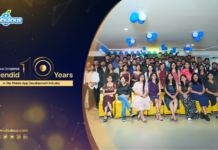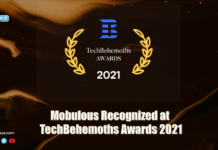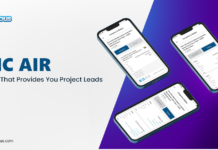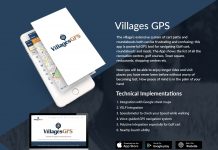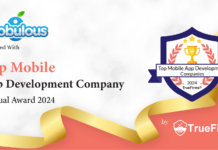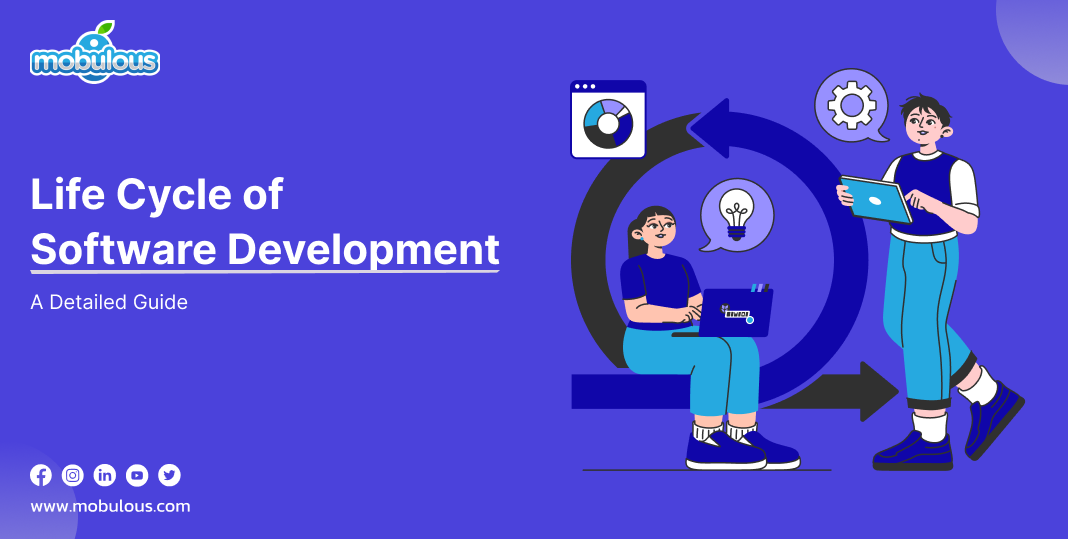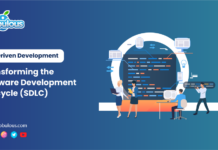Software Development Life Cycle — A Detailed Guide
Software Development Life Cycle (SDLC) is a systematic approach that guides the journey of software from initial conception to final deployment and maintenance. It provides a structured approach to creating top-quality software by breaking down the process into different stages.
This framework allows teams to plan, design, build, test, and deploy software effectively while maintaining clear communication and documentation throughout the project lifecycle.
It provides a roadmap for project managers and software engineers, ensuring that development is systematic, cost-efficient, and meets user expectations seamlessly and hassle-free. Let’s learn all about the software development life cycle or SDLC in a detailed way.
For Query:- Seek Guidance From a Top Mobile App Development Company!
What is Software?
Software is a collection of data, instructions, and programs that tell a computer how to perform particular tasks. It acts as an interface between users and computer hardware, allowing for different functionalities from simple calculations to complex operations.
The software can be categorized into system software, which handles and operates hardware resources, and app software, which assists users in performing relevant tasks seamlessly.
For Guidance:- Seek Help From an iOS App Development & Android App Development Company!
What is the Software Development Life Cycle (SDLC)?
SDLC or Software development life cycle is an extensive framework that structures the process of software development from inception to retirement. It encompasses a series of perfectly defined stages such as planning, analysis, design, implementation, testing, deployment, and maintenance.
This systematic methodology ensures quality, efficiency, and proper documentation while reducing risks and costs throughout the software development process. SDLC adapts to diverse methodologies like Agile, Waterfall, or DevOps.
Why is the Software Development Life Cycle Important?
Software Development Life Cycle aka SDLC plays an essential role in modern software development that provides structure and direction to complex projects. Let’s understand why SDLC is important for organizations and development teams:
1. Quality Assurance and Risk Management
The software development life cycle enforces systematic quality checks at every stage of the software development which significantly reduces the likelihood of crucial errors in the final product.
It enables early detection of possible risks and susceptibilities that enable software development experts to address issues before they become costly problems. This proactive methodology ensures higher software quality and reduces maintenance costs.
2. Cost-Effective Development
By providing a clear roadmap and comprehensive planning, the Software development life cycle helps firms optimize resource allocation and prevent budget overruns. It enables accurate cost estimation and effective resource utilization through structured phases.
Regular monitoring and control mechanisms help identify and address cost-related issues early and prevent costly last-minute changes.
3. Enhanced Project Control
The structured nature of the software development life cycle provides project managers with better visibility and control over the process of software development.
It sets up clear milestones, deliverables, and timelines that make it seamless to track progress and handle team performance. This structured methodology assists in maintaining project momentum and ensures on-time software delivery.
4. Improved Client Communication
SDLC or software development life cycle creates a framework for transparent and consistent communication with clients throughout the software development process.
It helps in establishing clear expectations, handling requirements changes, and ensuring client involvement at essential stages. This collaborative methodology leads to better alignment between final deliverables and client expectations.
5. Documentation and Knowledge Management
The software development life cycle framework focuses on extensive documentation at every stage of software development, developing a valuable knowledge repository for future reference.
This documentation helps in maintaining and updating the software, ensuring compliance with industry standards, and training new team members. It also fosters knowledge transfers (KTs) and continuous improvement.
How Does Software Development Life Cycle Work?
The software development life cycle or SDLC functions through a series of interconnected stages, each building upon the previous one in order to develop a robust software solution. The detailed breakdown of its working is as follows:
1. Requirements Gathering and Analysis
This initial phase involves collecting comprehensive requirements from stakeholders through interviews, surveys, and workshops. Teams examine these necessities for feasibility, clarity, and completeness.
Business analysts document both functional and non-functional necessities, creating specifications that will guide the overall software development process. This foundation ensures alignment with diverse business goals.
2. Design and Planning
Software development experts transform necessities into detailed system design specifications, developing both top-level and comprehensive technical architectures. This includes database design, user interface mockups, and system integration plans.
Architects and UI/UX designers consider scalability, performance requirements, and security while planning the technical methodology. This phase produces comprehensive design documents.
3. Development and Implementation
Software developers compile code as per their design specifications, following coding standards and best practices. The software development experts enforce features incrementally, usually leveraging version control systems for code management.
Regular code reviews and integration testing ensure quality throughout the process of software development. This phase transforms designs into working software.
4. Testing and Quality Assurance
Quality assurance teams conduct comprehensive testing such as unit testing, system testing, integration testing, and user acceptance testing.
They identify and report bugs, ensure performance standards are met, and verify functionality against requirements. Security testing and load testing validate the resilience and reliability of the software.
5. Deployment and Maintenance
The final phase involves deploying the software to the production environment and providing ongoing support. Software development experts manage user training, system monitoring, and documentation updates.
Regular maintenance includes performance optimization, bug fixes, and feature updates, ensuring the software remains up-to-date and effective throughout its lifecycle.
Different Models of SDLC
Different SDLC models have evolved to meet various project requirements and software development environments. Each model offers exceptional benefits and is suited for specific types of projects. Below are the different models of SDLC:
1. Waterfall Model
The Waterfall model follows a linear and sequential approach where every stage must be completed before moving to the next. It starts with the requirements gathering, followed by design, implementation, testing, deployment, and maintenance.
This model is ideal for projects with unchanging and clear necessities and well-defined processes. Its structured nature makes it easy to understand and manage, though it lacks flexibility for requirement changes.
2. Iterative Model
The Iterative model breaks the project into smaller cycles, each delivering a portion of functionality. Every iteration generally includes planning, design, development, and testing phases.
This methodology enables more flexibility and faster delivery of partial working solutions. Teams can incorporate feedback from previous iterations that makes it effective for large projects where requirements may evolve as time passes.
3. Spiral Model
The Spiral model combines components of both waterfall and iterative methodologies, emphasizing risk analysis. It progresses through four stages, i.e., planning, risk analysis, engineering, and evaluation.
Every spiral cycle expands the scope of the project while managing risks. This model is particularly valuable for complex and large projects where risk management is crucial and necessities may change substantially.
4. Agile Model
Agile focuses on continuous improvement, flexibility, and quick delivery through short development cycles known as sprints. It promotes close collaboration between cross-functional teams and stakeholders, embracing change even late in software development.
This model specializes in dynamic environments where requirements frequently change and quick adaptation is required. It prioritizes consumer satisfaction through early and continuous delivery.
5. V-Shaped Model
The V-shaped model extends the waterfall model by focusing on testing phases that parallel each development stage. Every development phase has a corresponding testing stage that ensures validation at every step.
This model works perfectly for small to medium projects where needs are understood well and technical risks are minimal. It focuses on quality assurance throughout the software development process.
6. Big Bang Model
The Big Bang model is a high-risk and minimal planning methodology where software development starts with available resources and client necessities. It suits small projects with minimum requirements and small teams.
This Big Bang model offers maximum flexibility but minimal structure that makes it unsuitable for complex or mission-critical projects. Resources are committed as they become available in this model.
7. DevOps Model
DevOps combines operations and development that emphasize continuous integration, deployment, and delivery. It promotes automation, close collaboration, and monitoring between operations and development teams.
This model focuses on frequent releases, shorter development cycles, and continuous feedback. It enhances deployment frequency and reliability while reducing time-to-market.
How Does Software Development Life Cycle Address Security?
Security is a fundamental prospect of SDLC or software development life cycle, integrated throughout all phases in order to ensure robust protection against susceptibilities and threats. Let’s have a detailed discussion on how SDLC addresses security seamlessly:
1. Security Requirements Analysis
During the initial stage, the highly skilled teams of software developers identify security requirements and compliance standards. This generally includes examining possible threats, setting up security policies, and demonstrating security objectives.
Security requirements are documented alongside functional requirements in order to ensure they are treated as crucial system features rather than afterthoughts.
2. Secure Design Implementation
Security principles are integrated into the system design and architecture. Teams of software developers enforce security patterns, design secure data flows, and select secure libraries and frameworks.
This phase generally includes security architecture review, threat modeling, and the development of security controls in order to safeguard against identified risks.
3. Secure Coding Practices
Software developers follow secure coding guidelines and best practices during implementation, including output encoding, input validation, secure session management, and proper error handling.
Regular code reviews and security-focused static analysis tools in order to help identify susceptibilities early in software development.
4. Security Testing and Validation
Comprehensive security testing includes vulnerability scanning penetration testing, and security audits. Teams conduct both manual and automated security assessments in order to identify potential weaknesses.
This phase ensures all security controls are functioning and operating efficiently and meeting compliance necessities seamlessly.
5. Security Monitoring and Response
After deployment, continuous security monitoring and incident response procedures are enforced such as intrusion detection, log analysis, and regular security assessments.
Software development teams maintain security patches and updates while monitoring for the latest vulnerabilities and threats.
6. Security Documentation and Training
Security documentation is maintained throughout the SDLC such as security policies, incident response plans, and procedures.
Regular security training ensures team members understand security necessities and best practices. This documentation supports compliance audits and helps maintain security standards.
Challenges & Overcomes in Software Development Life Cycle (SDLC)
Understanding and addressing the complexities of software development needs a detailed yet comprehensive approach in order to identify challenges and enforce efficient solutions. Below is a detailed exploration of the most crucial challenges and their strategic overcomes:
| Types | Challenges | Overcomes |
| Changing Requirements | 1. Constantly evolving project requirements create significant disruptions in development processes.
2. Frequent changes can derail project timelines, increase costs, and create confusion among team members. 3. Stakeholders often struggle to define precise requirements, leading to misalignment between expectations and final deliverables. |
1. Implement flexible methodologies like Agile and Scrum that embrace change as a natural part of development.
2. Develop robust change management processes, maintain clear communication channels, and create iterative development cycles that allow continuous refinement of requirements. |
| Communication Gaps | 1. Miscommunication between stakeholders, developers, and management can lead to misunderstandings, project delays, and incorrect implementations.
2. Different technical backgrounds, communication styles, and expectations create barriers to effective information exchange and project understanding. |
1. Utilize advanced collaboration platforms, implement regular stand-up meetings, create comprehensive documentation, and establish clear communication protocols.
2. Develop cross-functional teams with diverse skills and encourage open, transparent communication channels. |
| Resource Constraints | 1. Limited financial, human, and technological resources can significantly impact project development and implementation.
2. Organizations often struggle with budget limitations, skill shortages, and technological infrastructure challenges. |
1. Develop comprehensive resource allocation strategies, invest in skill development, leverage cloud technologies, and implement efficient project management techniques.
2. Utilize outsourcing and flexible staffing models to optimize resource utilization. |
| Technical Complexity | 1. Rapid technological advancements and increasing system complexity create challenges in maintaining updated technical skills and implementing cutting-edge solutions.
2. Development teams must continuously adapt to emerging technologies and complex architectural requirements. |
1. Encourage continuous learning through training programs, certifications, and knowledge-sharing sessions.
2. Implement technology roadmaps, invest in research and development, and foster a culture of innovation and technological exploration. |
| Quality Assurance | 1. Ensuring consistent software quality across different development stages remains a significant challenge.
3. Complex systems, diverse user requirements, and intricate functionalities make comprehensive testing difficult. |
1. Develop multi-layered testing approaches including unit, integration, system, and user acceptance testing.
2. Implement automated testing tools, create detailed test cases, and establish rigorous quality control mechanisms. |
| Security Vulnerabilities | 1. Increasing cyber threats and sophisticated attack vectors create substantial risks in software development.
2. Protecting sensitive data and ensuring robust security measures throughout the development lifecycle becomes increasingly challenging. |
1. Integrate security considerations from the initial design phase, conduct regular security audits, implement encryption protocols, and develop comprehensive security frameworks.
2. Train development teams in secure coding practices. |
| Scalability Issues | 1. Designing software systems that can efficiently scale with growing user demands and increasing complexity presents significant engineering challenges.
2. Existing architectures often struggle to accommodate unexpected growth and performance requirements. |
1. Adopt microservices architecture, implement cloud-native development principles, design modular systems, and create flexible infrastructure that supports horizontal and vertical scaling strategies. |
| Time and Budget Overruns | 1. Software development projects frequently exceed initial time and budget estimates, creating financial strain and stakeholder dissatisfaction.
2. Inaccurate planning and unforeseen complications contribute to persistent scheduling challenges. |
1. Utilize advanced project management tools, implement detailed work breakdown structures, conduct regular progress assessments, and maintain transparent reporting mechanisms.
2. Develop contingency plans and realistic timeline projections. |
| Legacy System Integration | 1. Integrating new software solutions with existing legacy systems creates complex technical and operational challenges.
2. Outdated technologies and incompatible infrastructure hinder seamless system interactions. |
1. Develop comprehensive migration strategies, create middleware solutions, implement gradual modernization approaches, and maintain backward compatibility.
2. Utilize API-driven integration techniques. |
| Stakeholder Alignment | 1. Aligning diverse stakeholder expectations, technical requirements, and business objectives creates significant coordination challenges.
2. Conflicting priorities and communication gaps can derail project success. |
1. Establish clear governance frameworks, develop comprehensive stakeholder management strategies, create regular feedback mechanisms, and maintain transparent communication channels throughout the development process. |
Tips to Choose The Right SDLC Model
Selecting an appropriate SDLC or software development life cycle model requires careful consideration of multiple factors in order to ensure project success. The choice will substantially affect the software development efficiency, overall project outcomes, and team productivity. Below are the tips to help you choose the right SDLC model:
1. Project Requirements And Necessities
Understanding project needs is fundamental for selecting the right SDLC model. The clarity and stability of requirements play an essential role in this decision. Projects with well-defined and stable necessities might benefit from conventional models like Waterfall, while those with emerging necessities need more flexible methodologies like Agile.
Consider the documentation needs, specifically for maintenance and compliance purposes. Technical specifications must be evaluated thoroughly like system dependencies and integrations.
Industry-specific regulations and compliance necessities can also affect the choice of approach, as some models provide better traceability and documentation for regulatory compliance.
2. Project Size And Complexity
The scale and complexity of a project significantly affect the choice of SDLC model. Complex system architectures with numerous component interactions might require more robust models like DevOps or Spiral.
Consider how different modules depend on each other and how the selected technology stack affects the software development. The size of the software development experts and their geographical distribution also play a role in larger and more distributed teams usually advantage of a more structured methodology choice.
Project duration impacts approach choice, as longer projects might require more flexible models in order to accommodate changes over time.
3. Team Expertise And Skills
Team experience and capabilities are vital factors in approach selection. Examine the technical proficiency of team members and their familiarity with different SDLC models.
Some approaches require mindsets or specific skills, for instance, Agile needs self-organizing teams comfortable with quick iterations. Consider whether additional training would be required and how that might affect project timelines.
The team’s communication potential and adaptability to the latest processes should also affect the decision, as some models demand more flexibility and collaboration than others.
4. Client Involvement
The nature and level of client engagement significantly affect SDLC model selection. Some approaches need frequent client interaction and feedback, while others need more intensive initial involvement but less ongoing participation.
Estimate the client’s technical understanding and potential to provide meaningful feedback. Consider their availability for reviews, meetings, and approvals, as this can impact project momentum.
The decision-making authority and process on the client’s side should align perfectly with the selected methodology’s necessities for stakeholder involvement.
5. Time And Budget Constraints
Resource constraints usually shape the software development life cycle or SDLC model selection. Consider not just the immediate timeline and budget necessities, but also long-term resource needs.
Some models allow for faster initial delivery but might need more resources for ongoing maintenance. Estimate how different approaches affect software development speed and resource allocation.
Consider the expected return on investment (ROI) and how quickly value needs to be delivered to stakeholders. The potential to scale resources up to down is completely dependent on project needs and it should also factor into the decision.
6. Risk Management
Different software development life cycle or SDLC models manage and handle risk differently which makes it an essential selection factor. Consider the risk profile of the project such as technical, operational, and business risks.
Some models like a spiral, explicitly incorporate risk analysis and mitigation strategies. Quality assurance necessities and testing requirements should affect the choice, as should the methodology in order to change management. Consider how different approaches support contingency planning and risk mitigation strategies.
7. Product Release Timeline
Release strategy significantly influences SDLC model selection. Consider whether the project requires continuous deployment, single comprehensive release, or phased releases.
Market demands and competitive pressures might necessitate faster time-to-market, favoring more Agile methodologies.
Feature prioritization and the need for minimum viable product releases versus full feature sets should be considered. Version control necessities and update frequency also affect the choice of methodology.
8. Support And Maintenance
Long-term maintenance necessities should affect SDLC model selection. Consider how diverse models support ongoing updates, system enhancements, and bug fixes.
Documentation standards for support teams are essential, as is the procedure for tracking and resolving bugs. Consider how system updates and patches will be managed long-term.
Knowledge transfer or KT necessities and the requirement for maintaining extensive documentation should also factor into the decision.
9. Stakeholder Expectations
Last but not least, stakeholder needs and expectations significantly affect methodology choice. Consider necessities for reporting, progress tracking, and visibility into the software development procedure.
Quality standards and expectations must align perfectly with the selected methodology’s approach to quality assurance. Communication needs and frequency should be evaluated, as should the methodology for managing stakeholder-requested changes. Clear success criteria aligned with stakeholder expectations help guide the choice of methodology.
The Bottom Line
The Software Development life cycle or SDLC serves as a cornerstone in modern software development that provides a structured approach to creating top-quality software solutions.
Whether following conventional models like Waterfall or embracing modern methodologies like DevOps and Agile, SDLC ensures systematic development, effective resource utilization, and quality deliverables.
By carefully selecting and enforcing the right SDLC model, organizations can optimize their software development process and achieve successful project outcomes.
FAQs — Software Development Life Cycle
Q. What is SDLC?
Ans. Software Development Life Cycle is a systematic process that guides software development from initial conception to final deployment and maintenance. It provides a structured approach to creating high-quality software through well-defined phases of planning, design, implementation, testing, and support.
Q. Is SDLC waterfall or agile?
Ans. SDLC is not limited to Waterfall or Agile; it’s a broader framework that encompasses multiple methodologies. Different SDLC models include Waterfall, Agile, Spiral, V-shaped, and DevOps, each suited to specific project requirements and development environments.
Q. What are the 7 phases of SDLC?
Ans. The 7 phases of the SDLC are mentioned below:
-
- Planning: It is the first stage of the SDLC.
- Requirements: It involves identifying stakeholders, their needs, and requirements.
- Design and Prototype: It involves designing and prototyping the software.
- Software development: It involves building the software.
- Testing: It involves testing the software.
- Deployment: It includes delivering the software to users.
- Maintenance: It includes maintaining the software and keeping it up-to-date.
Q. What is the spiral method?
Ans. The Spiral model is an iterative risk-driven SDLC approach that combines design and prototyping. It emphasizes risk analysis through repeated cycles, allowing incremental development with continuous stakeholder feedback and systematic risk management throughout the project lifecycle.
Q. What is Agile in a project?
Ans. Agile is a flexible, iterative project management approach that emphasizes continuous improvement, rapid delivery, and customer collaboration. It breaks projects into short development cycles called sprints, enabling quick adaptation to changing requirements and continuous stakeholder engagement.

